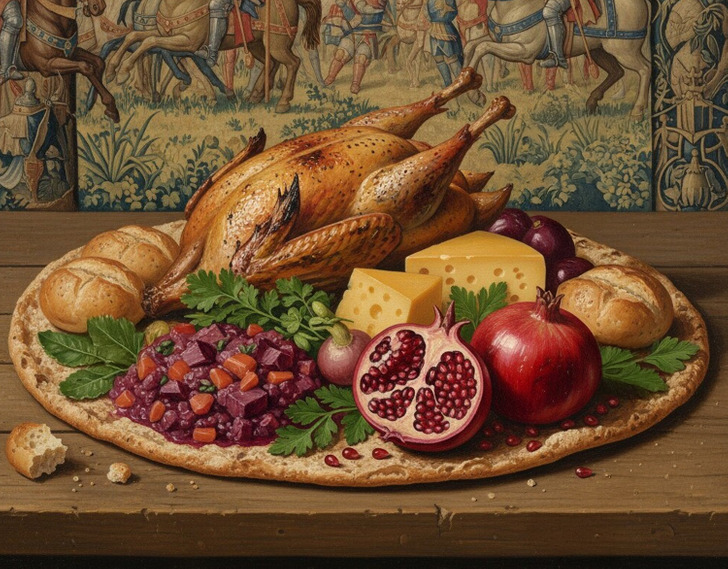“Thank You for Every Woman Above 40!” Gwyneth Paltrow’s Unfiltered Face Creates Massive Reaction


Throughout history, the wealthy and noble have always stood apart, enjoying privileges far beyond the reach of ordinary people. Yet their lives were far from carefree. Rigid etiquette, peculiar customs, and countless domestic restrictions dictated their every move. What seems simple to us today might once have been considered scandalous or strictly forbidden in aristocratic circles.
In the past, wearing the latest styles of corsets was a clear symbol of status and refinement. From the 16th century until the early 19th century, they were an essential part of women’s wardrobes — and occasionally worn by men as well. For women of aristocratic birth, a corset was practically mandatory.
However, these tightly laced garments often came at a cost. Corsets compressed the stomach and restricted intestinal movement, which could lead to constipation and indigestion. The constant downward pressure on the pelvic floor also contributed to urinary incontinence — a condition similar to what many women experience during pregnancy.

No matter how much money you had, it didn’t guarantee you quality dental care. Up until the 17th century, there were barber-surgeons who not only took care of haircuts and shaves but also performed minor surgical procedures. And even if you were of royal blood and had a toothache, there was only one solution — to have it extracted by this specialist.

And all because these floors were simply beaten earth. A floor could be plastered or stone, but in any case, it was strewn with reeds and straw. In spring and summer, flowers and herbs were added to mask unpleasant odors. The floors were quite dirty since this flooring was changed rather infrequently, by sweeping away the old straw with makeshift tools like bird feathers.
Tile floors, especially those decorated with clay, were only available to the wealthy people, as their production was very labor-intensive.
The life of English ladies in the early 19th century was governed by numerous rules, the breach of which could lead to being branded as uncouth and bold, or even permanently tarnished. The etiquette manuals of those years listed, for instance, the following requirements:
Maintaining good posture and always keeping a straight back were essential. If a lady witnessed profanity or bad manners, it was considered appropriate to faint.
Approaching familiar men on the street was prohibited — they were expected to approach. However, a lady was forbidden from conversing with a man unless accompanied by another lady, a male relative, or at least a servant. Talking to someone who had not been previously introduced was not allowed, yet ignoring someone who had been introduced was also unacceptable.
At a ball, dancing more than one dance with the same man was not permitted, and after dinner, ladies were expected to retire to another room so as not to disturb men who were having serious conversations.

In 19th and early 20th-century Britain, social events for the upper class were governed by strict rules. Dipping bread in sauce, holding cutlery incorrectly, or engaging in controversial conversations all meant you would be considered extremely ill-mannered. Offenses like this could result in you not being invited again anywhere.
During formal dinners, guests followed a precise seating plan — don’t even dream of sitting next to your spouse or best friend! Sitting correctly was also essential: you had to keep your back straight without touching the back of the chair under any circumstances.
During the meal, you were allowed to converse with one guest to your left or right, as decided by the hostess. When she turned to another guest or gently coughed, it signaled to the other guests that they could also change conversation partners. This was known as the “turn of the table.” It was considered unacceptable to leave for the restroom during dinner, which could last for quite awhile.

Even if you were a noble person in the Middle Ages, you still might not have gotten a proper plate! Instead, your food would be served on a stale slice of bread called a “trencher.” After the meal, it could be soaked in sauce and eaten, or given to servants or poor people as a form of charity.
Over time, the term “trencher” came to refer to a flat, rimless dish made of metal or wood. Similar dishes are still in use today, for example, for serving cheese platters.
Throughout the centuries, lavish feasts for noble families were not merely entertainment. They were a way to showcase wealth and status, which is why aristocrats splurged immense sums on these events, leading some of them to financial ruin.
The symbol of excess and luxury was the 18th-century Versailles. The extravagant balls there consumed incredible amounts of money, and the obligation to appear in expensive attire nearly bankrupted many noble families.

Since the Middle Ages, many countries have had sumptuary laws that prohibited wearing certain types and colors of fabrics, furs, trims, and embellishments, as well as flaunting their wealth and status through appearance. However, many people ignored these regulations.
People had to dress in strict accordance with their social standing. For instance, in 17th-century France, Louis XIII decreed that only princes and nobility could wear gold embroidery and lace-trimmed collars and cuffs. In the Victorian era, in order to be presented to the queen, women had to be dressed in a white gown with a tuft of 3 ostrich feathers in their hair, and no other way.

People who belonged to the upper class of England during Shakespeare’s time were much less free in choosing a partner than those who were lower on the social ladder. Arranged marriages were common and aimed primarily at strengthening family wealth and connections with influential people. Girls who disagreed with their father’s decision risked being rejected by their own parents.
Since ancient times, people have searched for ways to cleanse their bodies and improve their health. Enemas were already known in Ancient Egypt, where it was believed that intestinal residue harmed well-being. Members of the upper class regularly underwent the procedure several times a month, considering it an important part of maintaining good health.
The practice reached peak popularity during the Renaissance. What had once been a doctor’s responsibility became a fashionable ritual performed at home. Among the wealthy, daily enemas were not unusual. They were used to treat a range of ailments and even as a preventative measure. Coffee enemas, in particular, were thought to protect against cancer.
By the early 20th century, however, medical professionals began to raise concerns, warning that this seemingly harmless procedure could, in fact, be dangerous.
Be sure to check out our other article, where we highlight the times movies totally fooled us into believing complete nonsense.











